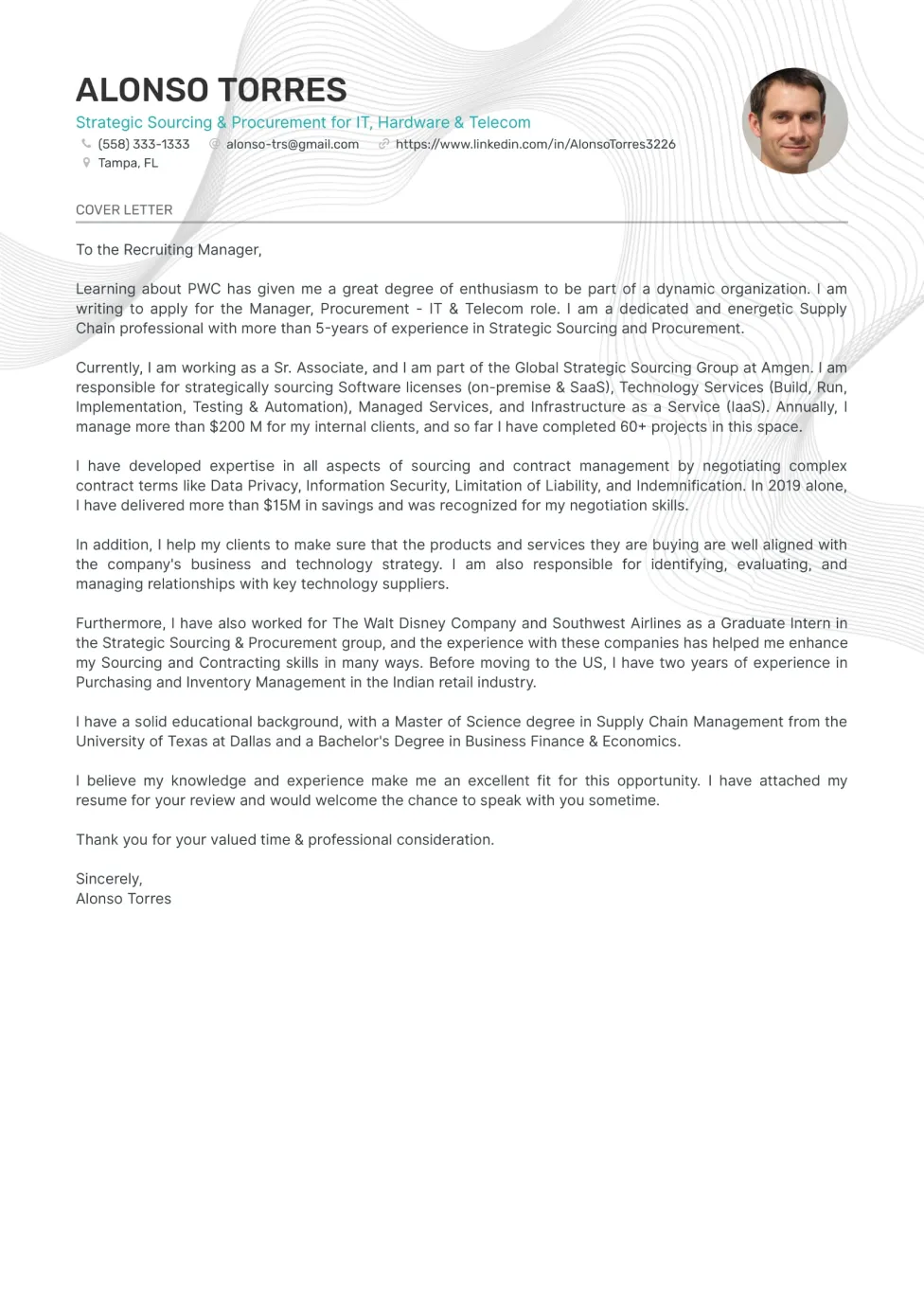What is a Cover Letter and Why Do You Need One?
A cover letter is a crucial document accompanying your resume when applying for a job. It serves as an introduction, allowing you to highlight your skills, experiences, and qualifications that align with the specific job requirements. Think of it as your personal sales pitch, designed to convince the hiring manager why you are the perfect fit for the role. In a competitive job market, a well-crafted cover letter can be the key to getting your foot in the door and securing an interview. It offers an opportunity to elaborate on your resume, showcasing your personality, enthusiasm, and understanding of the company and the position.
Why is a Cover Letter Important
A cover letter offers several benefits beyond what a resume can provide. It demonstrates your writing skills, attention to detail, and communication abilities. It also allows you to explain any gaps in your employment history or career changes. Furthermore, a cover letter is an opportunity to demonstrate your genuine interest in the company and the specific role, showing that you’ve taken the time to research the organization and understand its values. A compelling cover letter can set you apart from other candidates and increase your chances of landing an interview. It allows you to connect your experience and skills directly to the job description, showing the hiring manager why you’re the best candidate.
Key Components of a Cover Letter
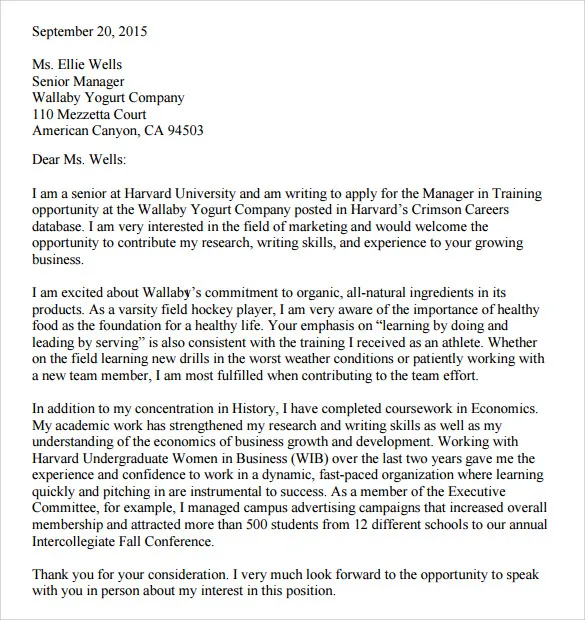
A successful cover letter contains specific elements that together create a compelling case for your candidacy. Each section plays a vital role in conveying your qualifications and enthusiasm. By including these key components, you can ensure your cover letter is comprehensive and effectively communicates your value to potential employers. A well-structured cover letter is clear, concise, and tailored to the specific job and company you are applying for.
Contact Information
Begin your cover letter with your contact information. This typically includes your full name, phone number, email address, and optionally, your LinkedIn profile URL. Ensure this information is accurate and up-to-date. It should be placed at the top of the letter, aligning it either to the left or right, depending on your preferred style. Your contact details make it easy for the hiring manager to reach you if they are interested in your application.
Personalized Greeting
Address your cover letter to a specific person whenever possible. Research the hiring manager’s name or the name of the person responsible for reviewing applications. Using a specific name shows that you’ve taken the time to personalize your application, making it more engaging. If you are unable to find a specific name, use a professional greeting such as “Dear Hiring Manager” or “Dear [Department Name] Team.” Avoid generic greetings like “To Whom It May Concern.” Personalizing your greeting makes a great first impression.
Body Paragraphs
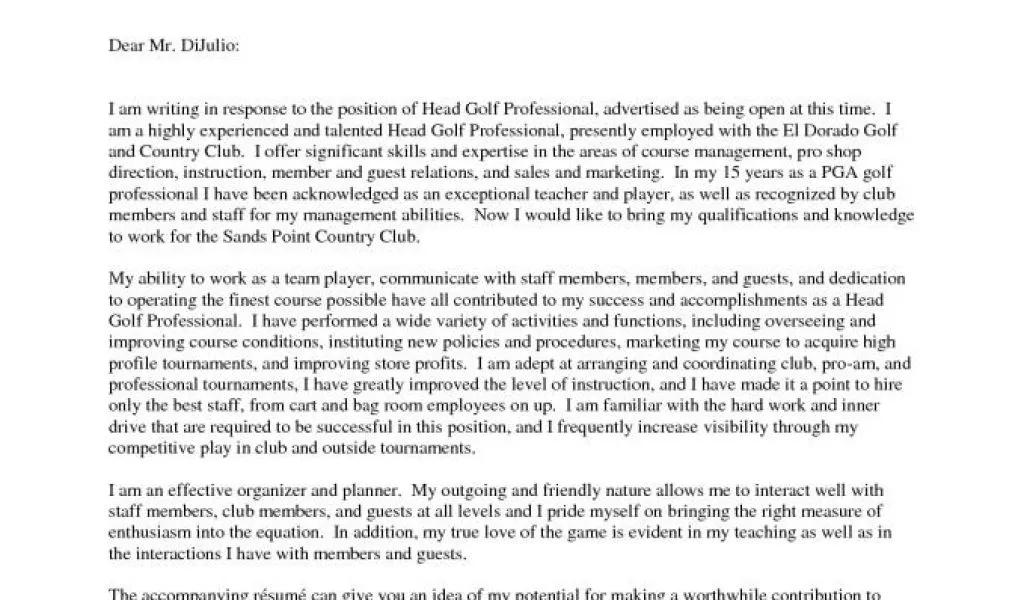
The body paragraphs form the core of your cover letter. They allow you to elaborate on your skills, experience, and qualifications, showcasing how they align with the job requirements. The number of paragraphs can vary, but generally, aim for three to five concise and well-structured paragraphs. Each paragraph should focus on a specific aspect, such as your relevant experience, your skills, or your understanding of the company’s needs. Use clear, concise language and provide concrete examples to illustrate your points. The body is where you sell yourself as the ideal candidate.
Highlight Relevant Skills and Experience
In the body paragraphs, emphasize the skills and experience that directly match the job description. Provide specific examples that demonstrate your abilities and achievements. Quantify your accomplishments whenever possible. For instance, instead of saying, “Managed social media accounts,” say, “Increased social media engagement by 30% in six months.” Be sure to tailor your examples to the specific requirements of the job. By highlighting relevant skills, you can make a strong case for why you are the best fit for the role.
Tailor Your Cover Letter
Customize your cover letter for each job application. This is crucial to demonstrate your interest in the specific role and company. Research the company’s mission, values, and culture. Review the job description carefully and identify the key requirements and keywords. Then, use these keywords and tailor your letter to address the specific needs of the position and company. Avoid using generic templates; instead, personalize your letter to show that you understand what the company is looking for and how you can contribute. Tailoring makes your letter more impactful.
Call to Action
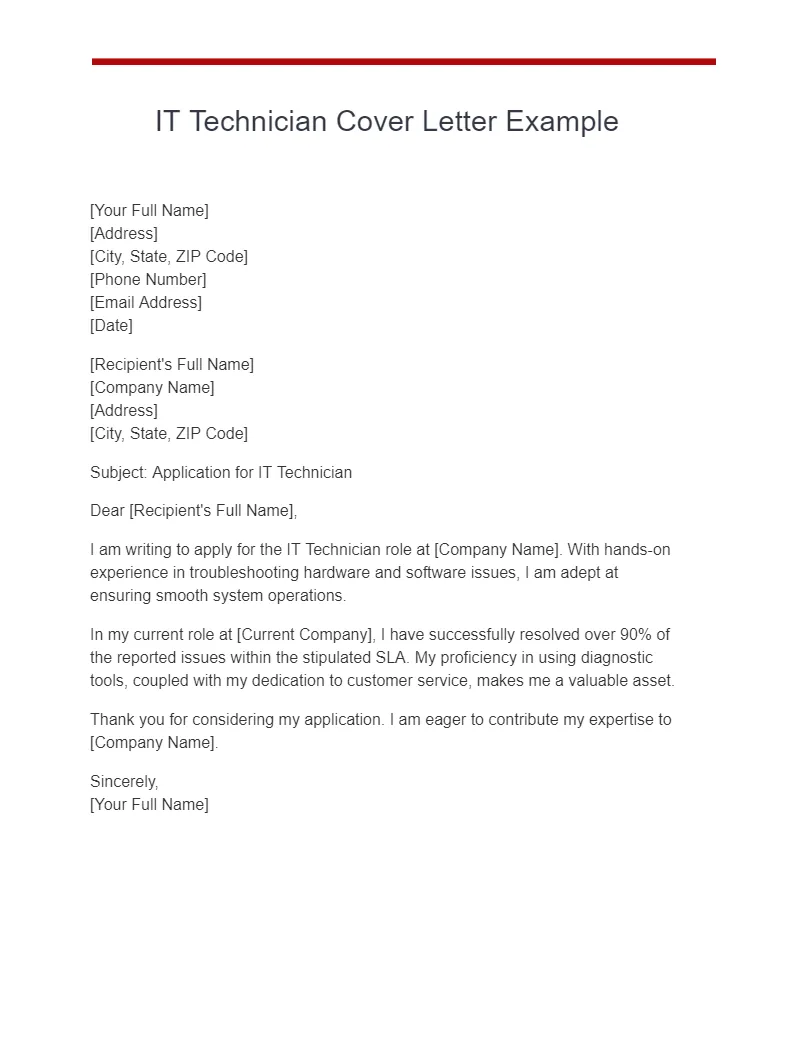
Conclude your cover letter with a clear call to action. This is where you explicitly state your interest in the position and express your desire for an interview. Reiterate your enthusiasm for the opportunity and thank the hiring manager for their time and consideration. You can also mention your availability for an interview. A strong call to action encourages the hiring manager to take the next step and consider your application further. It shows initiative and confidence.
Closing and Signature
Close your cover letter with a professional closing such as “Sincerely,” “Best regards,” or “Thank you.” Then, include your signature. If submitting a digital document, you can either type your name or include a scanned image of your handwritten signature. The closing and signature add a touch of professionalism to your letter. Ensure that the closing aligns with the tone of the letter and your overall communication style.
Cover Letter Formatting Best Practices
Effective formatting is key to making your cover letter easy to read and visually appealing. The layout, font, and spacing contribute to the overall impression you make. Following formatting best practices ensures your cover letter is professional and enhances readability. A well-formatted cover letter is easier to scan and review, increasing the likelihood that the hiring manager will read the entire document.
Font and Font Size
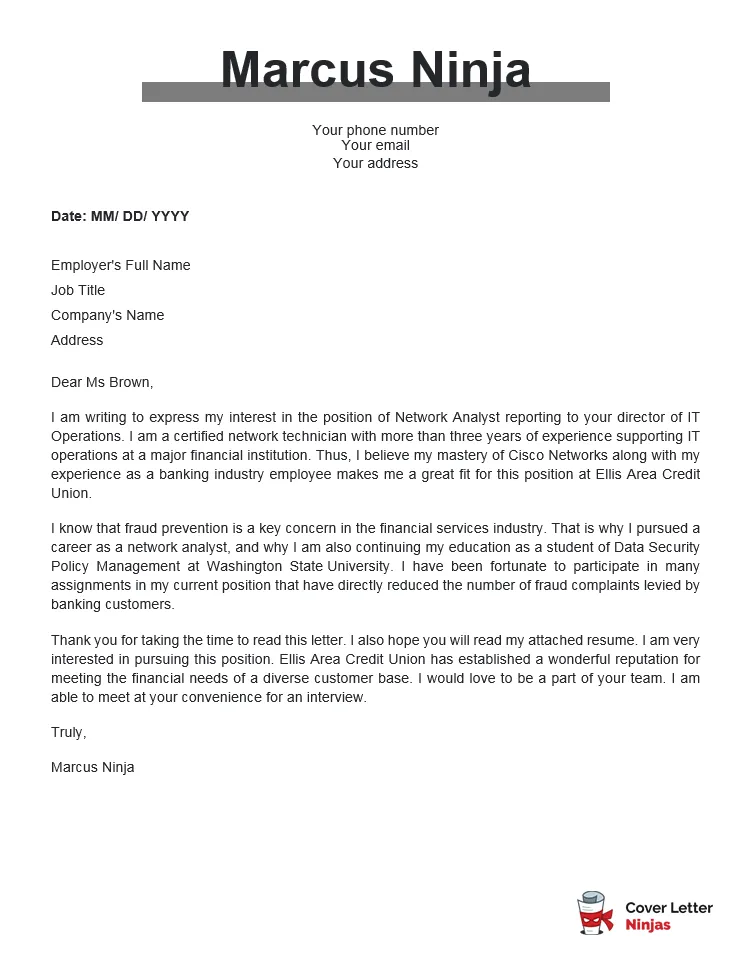
Choose a professional and readable font. Popular choices include Times New Roman, Arial, Calibri, and Helvetica. Avoid using overly stylized or decorative fonts, which can be difficult to read. Use a font size between 10 and 12 points. This size ensures the text is easily readable without taking up excessive space on the page. Consistency in font and size creates a clean and professional appearance. A legible font improves the reading experience for the hiring manager.
Margins and Spacing
Use standard 1-inch margins on all sides of your cover letter. This creates a balanced and visually appealing layout. Double-space between paragraphs for improved readability. Single-spacing is generally used within paragraphs. The spacing helps separate different sections and makes the letter less cluttered. Proper spacing ensures your cover letter is easy on the eyes. Consistent margins create a neat, organized appearance.
Proofreading and Editing
Thoroughly proofread and edit your cover letter before submitting it. Check for grammatical errors, typos, and punctuation mistakes. Errors can create a negative impression and undermine your credibility. Have someone else review your cover letter to catch any mistakes you might have missed. Consider using grammar and spell-check tools, but also read the letter carefully yourself. Proofreading ensures that your letter is polished, professional, and reflects your attention to detail. The perfect cover letter will make you look like a reliable candidate.
Cover Letter Examples for Different Industries
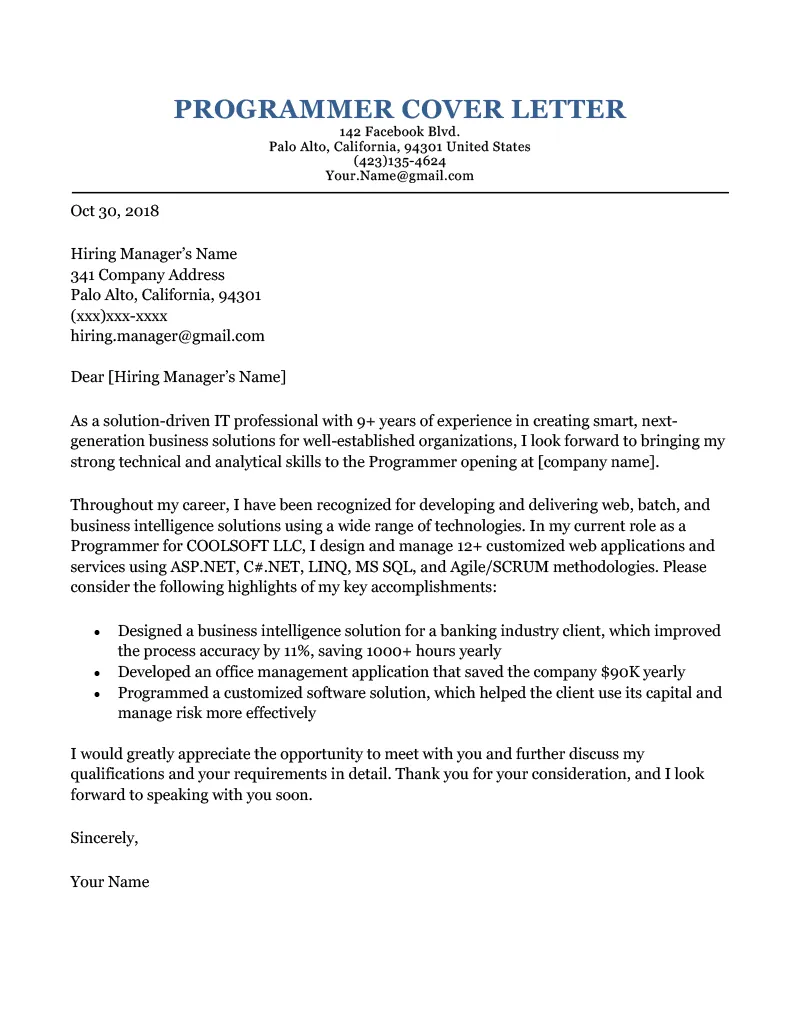
Cover letters need to be tailored to the industry and the specific role you are applying for. Certain industries have unique expectations or nuances. Consulting a tailored cover letter example can provide guidance for crafting an effective letter. Adapt the examples to your specific skills and experience. Following a good example can help you structure your letter in a way that highlights the most relevant information for a given field.
Cover Letter for Entry-Level Positions
When applying for entry-level positions, emphasize your educational background, internships, volunteer experience, and any relevant coursework or projects. Highlight any transferable skills gained from these experiences, such as communication, teamwork, or problem-solving. Focus on your enthusiasm and willingness to learn and grow within the company. Demonstrate how your skills and experiences align with the job description, even if you don’t have direct work experience. Show you can be a valuable asset.
Cover Letter for Experienced Professionals
Experienced professionals should focus on their accomplishments and quantify their impact. Use numbers to demonstrate your achievements, such as the percentage increase in sales, the number of projects completed, or the amount of money saved. Highlight your leadership skills, management experience, and any specific expertise relevant to the job. Tailor your cover letter to showcase your career progression and how your experience makes you a valuable candidate. Showcasing your proven track record can increase your odds of landing the job.
Common Mistakes to Avoid in Cover Letters
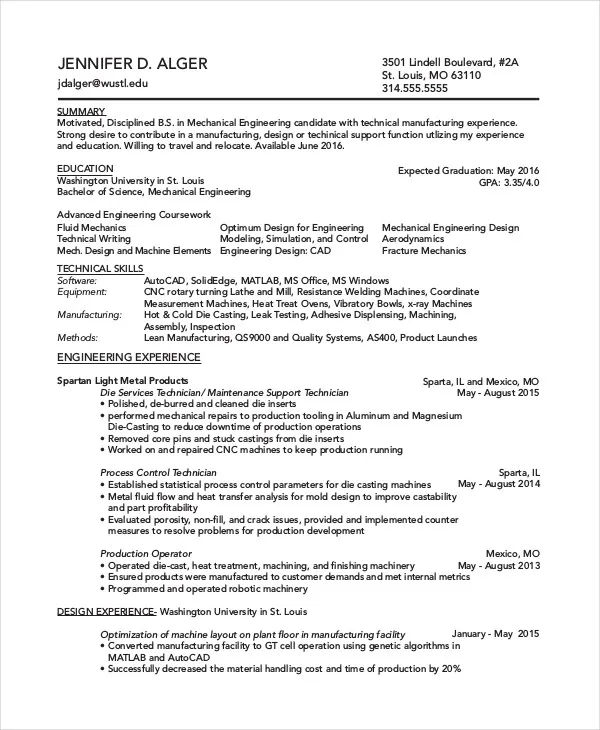
Certain mistakes can significantly decrease the effectiveness of your cover letter. Avoiding these common pitfalls will help you present yourself professionally. The goal is to create a positive impression that highlights your skills and experience while avoiding anything that could hurt your chances. Be mindful of these common errors.
Generic Cover Letters
Avoid using generic cover letters that are not tailored to the specific job or company. A generic letter does not demonstrate your interest in the position or your understanding of the company. Always customize your letter to the requirements of the job and research the company’s values and mission. Tailoring a cover letter is time-consuming, but it’s worth the effort. Hiring managers can tell when a letter is not personalized, which shows a lack of genuine interest.
Typos and Grammatical Errors
Typos and grammatical errors can create a negative impression and make you appear unprofessional. Always proofread your cover letter carefully before submitting it. Use spell-check and grammar-check tools, but also read the letter yourself to ensure accuracy. Having another person review your letter can help you catch mistakes you might have missed. Errors can undermine your credibility. Make sure your cover letter is free of any mistakes.
Cover Letter Submission
The way you submit your cover letter matters. Following instructions and adhering to the formatting guidelines can help you ensure your application is properly received. Improper submissions can create a bad impression and may lead to your application being overlooked. Proper submission is important.
Format the file
Save your cover letter in a professional format, such as a PDF file, unless the job posting specifies otherwise. PDF files preserve the formatting, so the hiring manager sees the document as you intended. Use a clear and concise file name, like “Your Name_CoverLetter.” This is a professional touch. Sending the right file format makes sure that the hiring manager can properly open and review your cover letter.
Follow Instructions
Carefully read and follow any specific instructions provided in the job posting regarding cover letter submission. These instructions may include specific file formats, naming conventions, or submission methods. Failing to follow instructions can be a sign of a lack of attention to detail. Paying attention to such instructions is critical. Adhering to the instructions demonstrates that you pay attention to detail and follow directions, and can help your application be properly considered.
